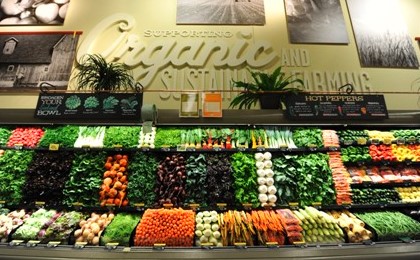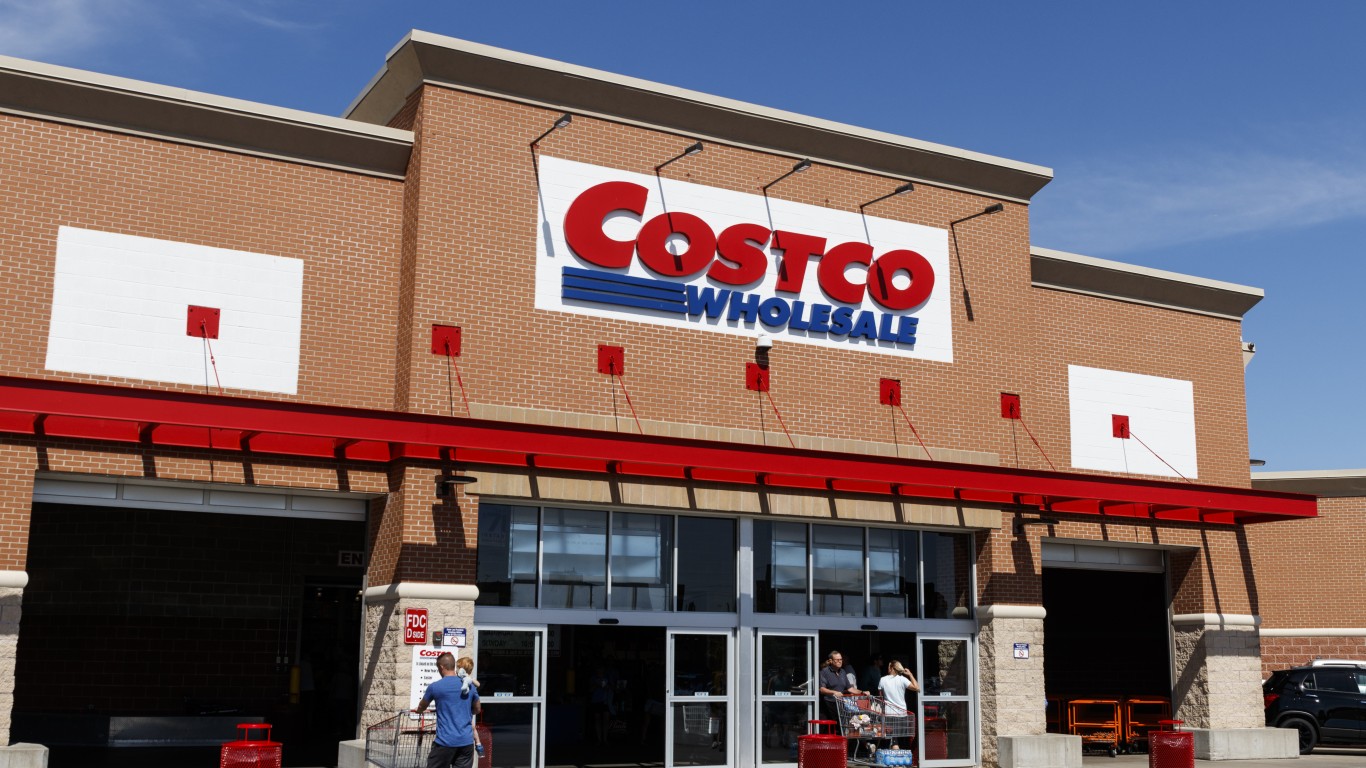Whole Foods Market Inc. (NASDAQ: WFM) has made a huge turnaround from where it was about eight months ago. To prove just how much the recovery has moved: Whole Foods shares have bounced roughly 44% from the post-warning lows of almost $36 in 2014. At the end of December we reviewed the Whole Foods turnaround prospects for 2015. Now the independent research firm Argus has weighed in on whether the organic and natural foods retailer will see its turnaround continue into 2015. Source: courtesy of Whole Foods Market
Source: courtesy of Whole Foods Market
Argus lowered its rating to Hold from Buy, with a price target of $50. While some investors panic about analyst downgrades, the downgrade’s rationale was effectively based on valuation rather than corporate operating issues. This was as a result of shares surpassing the price target and now trading close to the firm’s assessment of its fair value.
Whole Foods hares have outperformed the S&P 500 by roughly 25 percentage points, returning about 33% since Argus recommended buying the shares on weakness. That note was first made following a disappointing earnings report in May.
Earlier in 2014, downward guidance and a report of poor margins seemed to dig an inescapable hole for the company. One key issue was competition from the many new organic and natural food purveyors, as well as the continued threat from established grocers and superstores wanting their slice of the organic and natural pie.
ALSO READ: Why the Dow Will Hit 19,142 in 2015
Although Argus is reducing its rating, it wants to be clear that the Hold rating reflects the expectation that shares will perform in line with the S&P 500 over the next 12 months.
The independent research firm expects a small improvement in operating productivity and a slightly higher penetration of private-label products, which represent about 13% of sales.
Whole Foods is expected to maintain its leadership position in an increasingly competitive market for natural and organic foods. Argus does not currently see a catalyst for raising fiscal year 2015 and fiscal year 2016 earnings estimates, which are slightly above consensus.
Argus commented on the expanding store base of Whole Foods in its report:
With a growing pipeline of real estate deals, we expect Whole Foods to increase square footage by about 10% annually, with the store count rising to approximately 575 stores in fiscal year 18. Even then, Whole Foods should still have opportunities to open significantly more stores in the U.S. and internationally. We expect comparable-store sales to grow amid increasing demand for natural and organic foods as the U.S. population ages and becomes more health-conscious. Sales of natural and organic food grew at a compound annual growth rate of 12% from 1997 to 2012, and the market is expected to grow at a more than 11% rate from 2013 to 2020, according to Nutrition Business Journal. In 2013 sales of natural foods increased 11% as the overall supermarket industry grew 3% according to Natural Foods Merchandiser and Nielsen’s.
Competition is on the rise as more retailers are offering natural foods, but the company’s core shoppers are quality conscious. Luckily Whole Foods is considered a leader among natural and organic grocers.
A study from 2011 by the Food Marketing Institute found that consumers did not shop at the store most convenient to their home. Instead they chose a store based on variety, price and the quality of its produce and meat. Shoppers were also loyal to their primary store, with 69% of their grocery spending taking place at that store, according to a 2012 survey by the Food Marketing Institute.
ALSO READ: The World’s Most Innovative Companies
Argus gave its earnings and growth analysis as:
We are maintaining our fiscal year 2015 estimate at $1.76 per share. We are still expecting sales growth of approximately 11%. We expect square footage growth of 9%-10%. We are modeling an operating margin of about 6.5% and an EBITDA margin of approximately 9%, which is in line with the company’s guidance. We are modeling a roughly 35-basis-point decline in gross margin, offset partly by a decline in direct store expenses as a percent of sales. The average analyst estimate is $1.72, according to Bloomberg, on sales growth of 11%. Our fiscal year 2016 estimate is $2.00 per share, representing growth of approximately 13.5%. We continue to expect growth in square footage as well as a small increase in comp sales. Consensus is approximately $1.92. Our five-year earnings growth rate estimate remains 12%. This is based on an expectation for square footage to grow by approximately 10% over the period. We expect 3%-4% increases in comparable sales as a result of economic improvement, market share gains, and increased consumer interest in natural and organic foods and as a result of new stores ramping their productivity.
Whole Foods believes that it has room for about 1,200 stores in the United States. Management previously stated that it probably will not pursue additional large acquisitions, which could attract the attention of antitrust regulators. However, the company likely will continue to consider small acquisitions if the terms are attractive.
ALSO READ: The Bullish and Bearish Case for Wal-Mart in 2015
Shares of Whole Foods were down almost 2% at $50.85 midday Wednesday. The stock has a consensus analyst price target of $45.23 and a 52-week trading range of $36.08 to $56.42.
Sponsored: Attention Savvy Investors: Speak to 3 Financial Experts – FREE
Ever wanted an extra set of eyes on an investment you’re considering? Now you can speak with up to 3 financial experts in your area for FREE. By simply
clicking here you can begin to match with financial professionals who can help guide you through the financial decisions you’re making. And the best part? The first conversation with them is free.
Click here to match with up to 3 financial pros who would be excited to help you make financial decisions.
Thank you for reading! Have some feedback for us?
Contact the 24/7 Wall St. editorial team.



